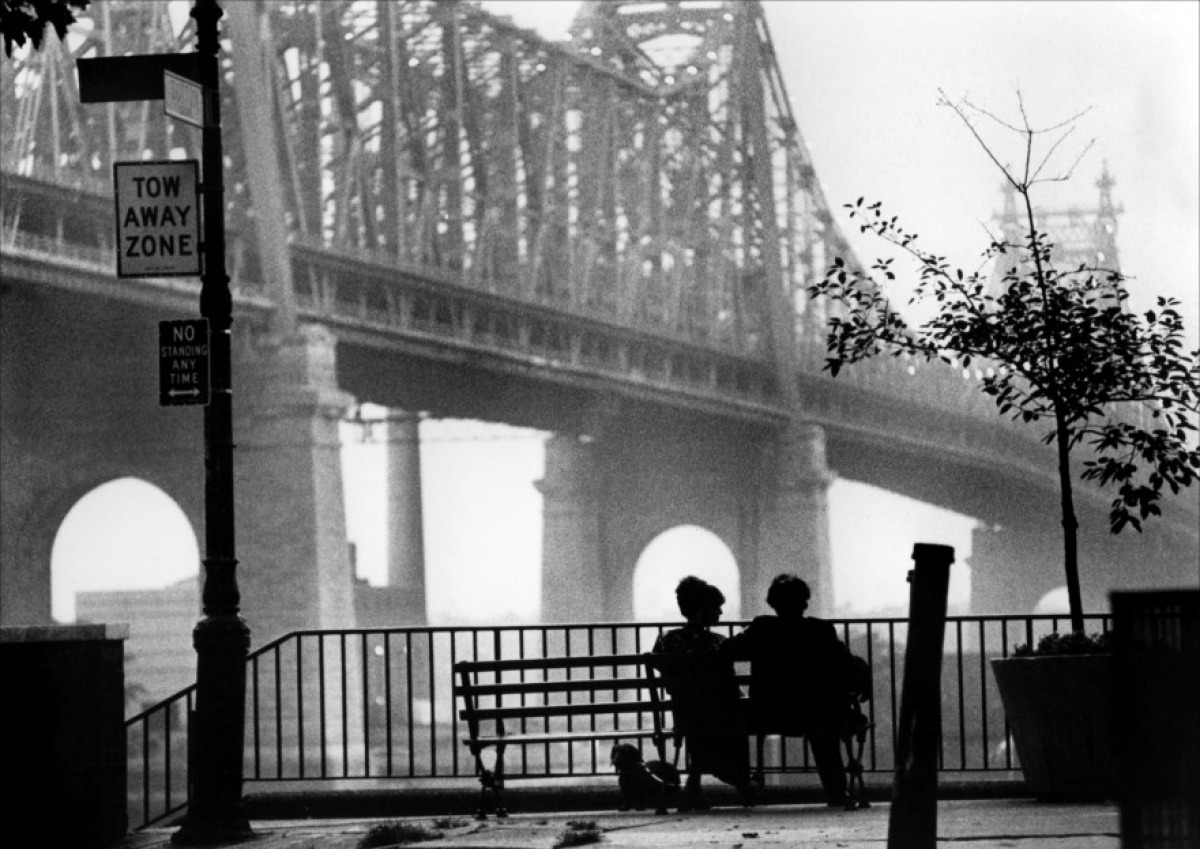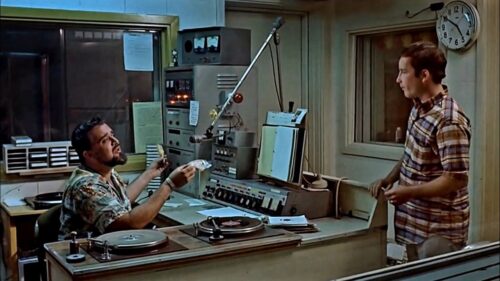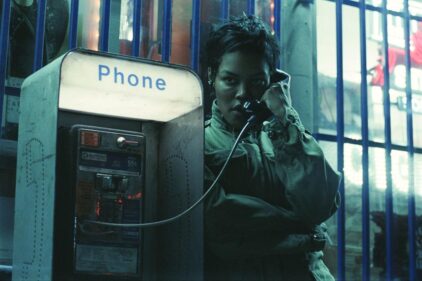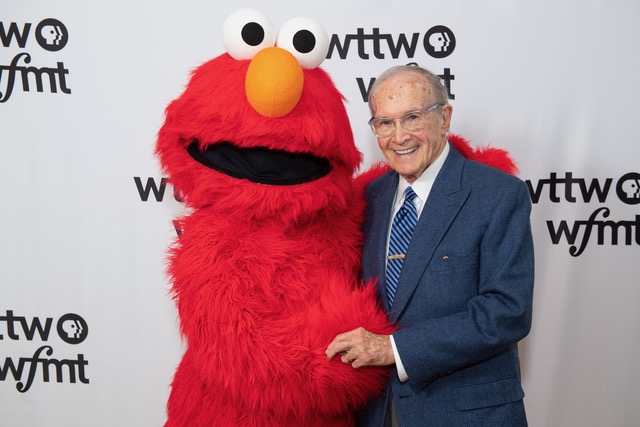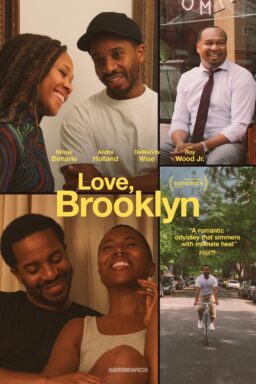It’s Time We All Admitted That Woody Allen Is A Creep,
Insists One Culture Writer. And Then What?
“Woody Allen is a genius. Woody Allen is a predator. He put
those two sides of himself together, hand in hand, and dared us to applaud. And
we did — over and over.” So writes Salon culture editor Erin Keane in a piece
that went online last
week, about an anecdote in Mariel Hemingway’s new memoir, and how it ought
to spark another reassessment of Woody Allen as an artist and as a human being.
Hemingway was one of the female leads in Allen’s 1979 “Manhattan,” playing a
very young love interest (17; Hemingway herself was a year younger than that
when the film was shot) of the film’s Allen-esque protagonist, Isaac, played,
as was the custom of the time, by Allen himself. In her book she tells of a
visit from Allen a couple of years later, when she was 18, and a proposal that
her parents were enthusiastic about but which she herself was not, and how
Allen slunk back to New York with his tail, such as it was, between his legs
after the proposal was nixed. Allen does not come off particularly well in the
story. (I don’t believe I can overstate that. Truly.)
“They put me on the cover of ‘Time’ and ‘The New York Times
Magazine,’ and they said it was the greatest. But two weeks before that
happened, if United Artists had said, ‘Well, tell you what we’ll do. If you do two
films for us for nothing, we’ll burn the negative of this one,’ I would have
said, ‘Okay, you have it.’” That’s Allen himself, talking about, yep,
“Manhattan.” Among the most entertaining parts of Jason Bailey’s recent book
“The Ultimate Woody Allen Companion” are the blurbs Bailey places in every
chapter wherein Allen himself assesses the movie under consideration. He
doesn’t like a whole bunch of them. And doesn’t consider himself a genius.
Keane would like her readers to take the Hemingway anecdote
and frame it so that it not only establishes or fills in a behavioral pattern,
but also casts “Manhattan” as an apologia for sexually predatory male behavior,
it appears. She understands this may take some doing, as she herself has had to
struggle with Allen and his work: “If you had asked me at 17 if I would ever
date a 44-year old, I might have actually barfed […]If you had asked me at 19
if I thought there was anything disgusting about Tracy and Isaac’s relationship
in ‘Manhattan,’ I would have said something like, well, it’s not real life, is
it? It’s a story. And to make great literature and film and drama, we have to
create spaces of empathy for characters who make poor choices in life.”
(What is it about These Kids Today, by the way, that compels
them, when writing about a work of art even a smidge older than they are, to
chronicle Their Personal Journey With That Work, as if that were the only way
to put it in context? Imagine if Carlos Clarens, born in 1930, had taken this
approach in his “Illustrated History of
Horror And Sci-Fi Films.” It might go a little something like this:
“’The Cabinet of Doctor Caligari’ was a milestone, indeed. But is it a film? I
have to admit that on some level, I will always feel drawn to it, maybe in the
way that disillusioned former church-goers might feel a yearning from somewhere
deep inside of them when they pass a door they know on so many levels they can
never cross again.” Well, I guess had that been the passage on page 19 of
Clarens’ book that I read, oh so many years, ago, I might have put said book
down, and gone ahead and learned a trade like my dad suggested, and we might
have all been better off. But I digress.)
“Hemingway’s revelation demands we look unflinchingly at the
reality that ‘Manhattan’ so artfully disguised as art, and see it for what it
truly is,” Keane avers. “We all have our
blind spots, but after a while, we also have to admit what we have deliberately
refused to see.” According to the headline, Mariel Hemingway’s “new revelation
matters.” But matters to who? And how? Is there some kind of concern here that
Allen has provided, through his art, not just a moral apologia for sexually
predatory behavior, but a how-to? And if so, who’s going to take the advice?
Why is a seamy incident, which took place well after the film was wrapped, some
kind of “open sesame” with respect to Allen’s perniciousness not just as a
human being but also as an artist?
There are a couple of things that occurred to me as I was
turning over Keane’s piece in my head, which answer these questions to my
satisfaction, albeit indirectly.
The first is that Woody Allen is, when you get down to it, a
cult artist. He is an uncommonly well-known and well-compensated cult artist,
but a cult artist nevertheless. I’d guess that the actual height of his
mainstream popularity, such as it was, occurred prior to his becoming a filmmaker. As a standup comic (the portion
of his career in which he made what was his most offensive joke, a rape
one-liner directed at his first wife which prompted a lawsuit) Allen was a
near-ubiquitous presence on television; his popularity in this context bled
over into his early film career, to the extent that there was actually a daily
black-and-white newspaper comic with the schlemiel Allen persona as protagonist
for a spell beginning in the mid-70s. (It wasn’t very good—or perhaps I should
say, I liked it when it first came out, but then after I had a personal journey
with it, I realized it wasn’t very good).
As a filmmaker, he’s not such
a culturally huge deal. Yes, his style of comedy—the persona, the emphases on
the neurotic, the urban, the urbane, cynicism, the fake-nervous performance
mode, etc—has been hugely
influential, just look at Jerry Seinfeld and so on; and on the other hand, has
kind of not been influential at all, just look at Larry The Cable Guy. Anyway,
the total box office take of the films he’s directed has been a little over
half a billion dollars, which is an awful lot of money—BUT, when you average it
out, or rather, when Box Office Mojo averages it out (and I must thank Box
Office Mojo for doing the heavy lifting, data-wise) to a gross of less than 15
million dollars per film, it looks less impressive because it is less
impressive. Even when adjusting for inflation, all but his two very best-performing
films—and these are, as it happens, “Annie Hall” and “Manhattan”—are not much
to delight an avaricious businessman. He makes his films cheaply, he’s
well-regarded enough in creative circles that prominent actors will take a big
cut in pay to work with him, and so on, so he isn’t a big risk,
return-on-investment wise, except when he is, as in the out-and-out bombs in
his filmography, which I’ll arbitrarily deem the pictures that made less than
$10 million in U.S. box office, of which there are ten out of 41, or roughly a
quarter of his output. Then there are 18 pictures that come in between $10 and
$30 million. These are not movie business world-beater numbers. And yet such is
Woody Allen’s public image that, for example, in 1992 Newt Gingrich could
disapprovingly cite Allen’s lifestyle, and everyone knew what he was talking
about. Hmm. Perhaps Allen is, finally, better known as a public figure for the
string of scandals to which his name has been attached since 1992 than he is
for his art or “art.”
The second thing that occurred to me is that it’s probably
not such a useful thing to seek life lessons from Allen in any event. Allen’s a
talented writer and filmmaker who has kind of come close to genius a handful of
times, he’s a lethal creator of gags (the one beginning “We were married by a
reform rabbi” is classic), but I’ve never been entirely nuts about “Manhattan”
myself. It’s got some good jokes, and
some nice bits of cinematic lyricism, and Allen does aesthetes of good faith a
solid by exposing the hateful pretentious underbelly of The Academy Of The
Overrated, and of course it’s beautiful to look at (Gordon Willis’
responsibility more than Allen’s) but on the whole I find it a bit trite in its
own sentimentality, and largely on-the-nose in its insights. Insights in art
are funny things: there may not be a whole lot of them out there that are
particularly new or fresh, so a work of art that wants to put across some
insights is going to have to articulate them with a particular kind of force. I
don’t think “Manhattan” quite musters that force. The governing irony of the
movie is that its youngest character, Tracy, is the most grounded and
reasonable and mature of the whole lot—and this notion is, the autobiographical
elements of the movie’s storyline notwithstanding, a high-flown cliché, as more
than one of the movie’s detractors (whom I’ll get to in a moment) have pointed
out. What’s lacking in the art, in other words, is already lacking. As creepy
as the anecdote from the Hemingway memoir is—and again, it is plenty creepy,
and reflects badly on all the older adults in the story, not just Allen—to
conclude that it definitively draws back the curtain and reveals not just
“Manhattan,” but Allen’s entire film career, as a plea to be let off the hook
for having a thing for teenage girls is shaky critical math.
“Blah, blah, blah, your conflicted male desire,” Keane
scoffs (with respect to Allen/Isaac’s “dilemma” in “Manhattan”), possibly
wishing to solicit Real White Male Tears with her disdain. But this White Male
kind of, um, digs where she’s coming from: conflicted male desire is, in and of
itself, a pretty played-out and possibly boring theme. On the other hand, I’m
not so crazy about “Fifty Shades Of Grey” either. As with themes so it is with insights:
it really all comes down to what the artist does with them. While “Manhattan” depicts an arguably age-inappropriate
relationship, that in and of itself does not make the film a programmatic
apologia for that relationship. Rather, at the end, when Isaac doesn’t end up with Tracy, “Manhattan”
wants to extract poignancy from the ebb and flow of desire and its
fulfillment/non-fulfillment—and the
quixotic chasing of another desire. Because Isaac can’t, in the words of Muddy
Waters, be satisfied, he also can’t, until the movie’s end, see the wonder of
what’s in front of him. And that’s sad, or at least, it’s supposed to be sad.
The only possible solution to the dilemma is described by, yes, the
Wiser-Than-Them-All teen Tracy: “You have to have a little faith in people.” Is
this a universal truth worth iterating, or an overplayed slab of sub-Chaplin
and/or Renoir humanism? I suppose your answer to that will mediate your
response to the overall work. Unless you
find the actual content of the film to be immaterial.
For many Allen detractors, it is immaterial, or, to be a bit of a cynic about it, there’s a
hierarchy of what content IS material: “You have to have a little faith in
people” doesn’t count, but the retrospectively damning “I’m reminded tonight of
the farmer who had incestuous relations with both his daughters simultaneously”
(from “Bananas;” there is a possibly legitimate comic setup to that bit, but
never mind) is a prime exhibit. The Salon piece, a late-breaking bit of Allen
disapprobation, is just one of a great many you see these days; a cultural note
that attempts to instruct the reader that “we” can’t accept “this” anymore. One almost universal feature
of such pieces is a frustrating vagueness about what action “we” are supposed
to take concerning the unacceptable state of affairs. What about Woody Allen,
then: Should Sony Picture Classics not finance the next batch of Allen films?
Should a boycott be organized?
The vagueness makes me curious. I suppose I could infer that
the ultimate purpose of the piece might be to “open up” “the conversation”—that
latter term, though is one I’ve never felt at home with in the realm of
cultural discourse. Nevertheless, comfortable or no, it is, these days, a term. But from where I sit the conversation about
Allen, or at least the conversation about Allen’s art, has been going on for
quite some time. And has never been
particularly monochromatic, for as much praise as his work has garnered.
The fact is, there really is no “we” in this exchange, and there never really has been. There has never actually been unanimity of opinion on Allen’s work. Check this out: “The characters in ‘Manhattan’ and ‘Annie Hall’ and ‘Interiors’
are, with one exception, presented as adults, as sentient men and women in the
most productive years of their lives, but their concerns and conversations are
those of clever children, ‘class brains,’ acting out a yearbook fantasy of
adult life. (The one exception is ‘Tracy,’ the Mariel Hemingway part in
‘Manhattan,’ another kind of adolescent fantasy. Tracy actually is a
high-school senior, at the Dalton School, and has perfect skin, perfect wisdom,
perfect sex, and no visible family. Tracy’s mother and father are covered in a
single line: they are said to be in London, finding Tracy an apartment. When
Tracy wants to go to JFK she calls a limo. Tracy put me in mind of an
American-International Pictures executive who once advised me, by way of
pointing out the absence of adult characters in AIP beach movies, that nobody
ever paid $3 to see a parent.)” That’s Joan Didion. In 1979, yet. Similarly,
Stanley Crouch, in a multi-author colloquy in the “Village Voice” at the time,
spewed terse disdain at “Manhattan” and called out its treatment/conception of
the Tracy character as flat-out exploitative. So again, one may be compelled to
ask, who’s this “we?” And what are Stanley Crouch and Joan Didion: chopped
liver?
As a society we obey a certain set of rules that allow our
lives to proceed on a particular path, a path we wish to be as free of various
hassles as possible. But as cultural consumers people have a variety of
different options and a variety of different priorities, and one of those
options directly relates to how much we allow ourselves to be affected by the
fact that artists whose work we admire are, with some frequency, not good moral
actors. Keane believes that cultural consumers ought to be affected quite
substantially by this. And as a side
note, anyone who’s been around show business a fair amount of time understands
it’s so rife with bad moral actors that people who strive to conduct their own
lives with a semblance of decency are practically compelled to enter
stomach-churning Faustian bargains on a nearly daily basis. But I’d like to
see, just once, a “What Is To Be Done?” piece that has the intestinal fortitude
to suggest at least one concrete answer to the question.

